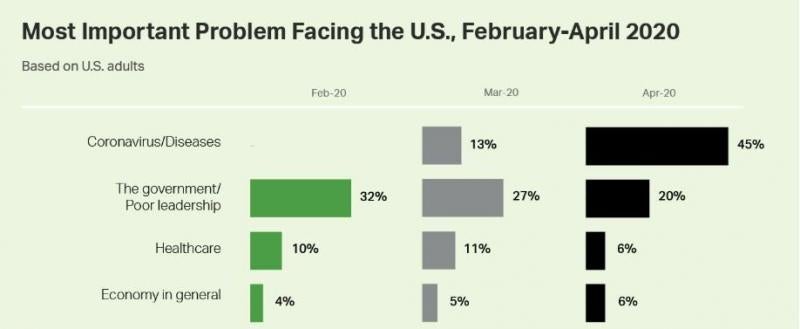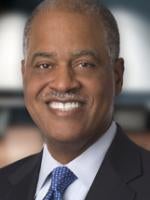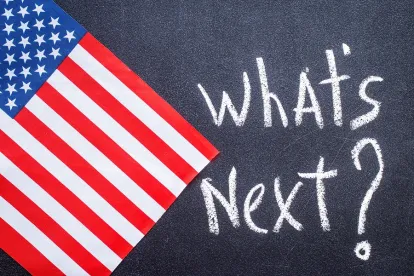The 2020 presidential election is less than six months away. Election predictions before Memorial Day are always risky. With that caveat, we examine the impact of the COVID-19 pandemic on the November presidential race.
The pandemic has reshaped the November presidential race in three fundamental ways: by changing who is leading the race; by potentially shifting key issues and messages that resonate with voters; and by affecting the voting process.
WHO IS LEADING?
Former Vice President Joe Biden leads President Trump in the most recent combination of national polls. President Trump has lost the bump he received from his administration’s response over the last 60 days. More important than the national numbers, Vice President Biden is leading in key swing states.
In the Real Clear Politics national average of polls, Vice President Biden is up by 5.5 percentage points. In the important battleground states of Wisconsin, Pennsylvania and Florida (all states that President Trump won in 2016), Vice President Biden leads by 2.7, 6.5 and 3.2 percent, respectively.
Battle for the White House

In the early days of the COVID-19 response, President Trump experienced a polling surge due to his handling of the pandemic. President Trump’s numbers have slipped recently as the majority of the public feel that he moved too slowly to address the virus. Paradoxically, President Trump’s numbers have also slipped as he has become more visible leading the daily White House Coronavirus Task Force briefings.
While President Trump has been highly visible, Vice President Biden has found himself less central to the national political conversation since the pandemic outbreak. Thus far, this relative lack of visibility has actually helped Vice President Biden. Look to see if the former Vice President slips as he becomes more of a focal point in the campaign.
Additionally, President Trump’s sagging poll numbers have changed the conventional wisdom about Republican’s ability to hold the Senate majority. Democrats have recruited strong challengers in key Senate battleground states that could help them win back the majority. Meanwhile, Democrats’ likelihood of holding their majority in the House of Representatives is becoming increasingly solidified.
IT’S ALL ABOUT THE ECONOMY, OR IS IT?
2020 could be the rare presidential election that is not primarily driven by the economy. As late as early March, the Trump campaign was prepared to tout record low unemployment and a record stock market. Those messages are no longer relevant.
Right now, the economy is shrinking due to the pandemic. There is no realistic scenario where COVID-19 disappears in the near term; only that its impact lessens. Many sectors of the economy are not expected to recover quickly. Economists now see a slower return for laid off or furloughed workers than the “tremendous rebound” administration officials have predicted. That is one of the reasons Americans now cite COVID-19 as the top issue facing the country. According to Gallup, 45% of Americans now cite the pandemic as top national problem, up from 13% in March.

Will that still be the case in six months? If so, the key issue entering the November election will be which candidate is trusted most on non-economic issues like COVID-19.
PROCESS FOR VOTING
The COVID-19 outbreak also complicates the voting process in November. The pandemic has wreaked havoc on primaries in several states. It is unknown how voters will respond in November if COVID-19 persists or re-emerges.
Democrats are seeking funding for vote-by-mail, expanded online registration, and early voting in the next COVID-19 response package to help states prepare for the election and the risks associated with the pandemic. Meanwhile, Republicans and the Trump Administration have raised concerns about fraud and imposing federal guidelines on the states’ elections.
CONCLUSION
Partisan views on the pandemic and the Administration’s response vary dramatically. Party identification also drives American’s feelings on the economy. Indeed, public perceptions about the economy often are more important than the actual numbers. In 1992, data showed the U.S. had moved out of a recession, but, at the time of the election, American perceptions were the economy was still not back on track. Governor Bill Clinton defeated the incumbent, President George Bush.
President Trump needs voters to think the economy is rebounding. Perhaps, more importantly, he needs Americans to feel he has a good handle on COVID-19 in order to defeat Vice President Biden. Our advice to clients is to continue a long-term, bipartisan approach to government relations.






 />i
/>i

